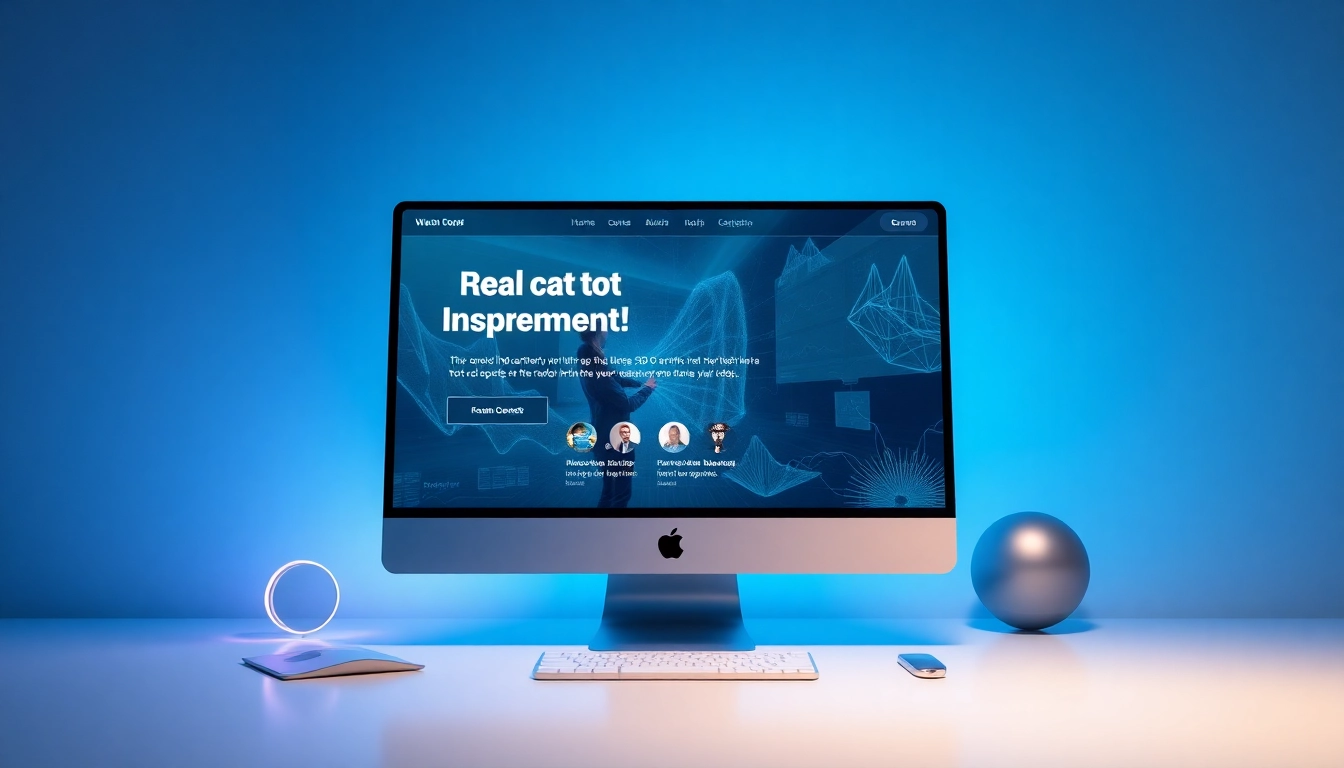Understanding the Importance of Digital Knowledge Resources
Defining Digital Knowledge and Its Relevance
In today’s fast-paced, technology-driven world, having access to digital knowledge resources is crucial for personal and professional development. Digital knowledge encompasses a vast array of information available online, including research papers, instructional videos, eBooks, and online courses that cater to diverse fields of study. These resources are essential not only for academic success but also for lifelasting learning, as they provide up-to-date content that can adapt to the ever-evolving knowledge landscape.
The relevance of digital knowledge is underscored by the rapid growth of the internet and the increasing reliance on digital platforms for education and training. With the advent of e-learning platforms and educational technologies, learners from all backgrounds can now access quality educational materials right at their fingertips. One such resource hub, https://www.informaticsview.com, serves as a powerful conduit for knowledge, connecting users to important academic and technology-related content.
Common Challenges in Accessing Information Online
While the benefits of digital knowledge resources are clear, accessing information online comes with its share of challenges. One significant hurdle is the overwhelming volume of content available on the internet. This information overload can lead to confusion and difficulty in determining which sources are credible, relevant, or up-to-date.
Another challenge is the digital divide, where not everyone has equal access to technology or high-speed internet, thereby limiting their ability to benefit from these resources. Furthermore, varying levels of digital literacy among users can hinder effective navigation and utilization of online content. It’s vital to develop skills in discerning valuable information, which often necessitates education and training in digital literacy.
Identifying Reliable Sources: What to Look For
Finding reliable information online is essential but can be challenging. To identify trustworthy sources, users should consider several factors:
- Authority: Check the author’s credentials and experience in the field to gauge the credibility of the information presented.
- Reputation: Look for sources with a solid reputation, such as well-known academic institutions, government websites, or respected publishers.
- Currency: Verify the publication date to ensure that the content is up-to-date and relevant to current developments in the field.
- Bias and Objectivity: Assess if the information is presented objectively or if there is an inherent bias that could skew understanding.
By applying these criteria, users can sift through the plethora of online information and pinpoint resources that offer genuine educational value.
Navigating https://www.informaticsview.com for Effective Learning
A Guide to Accessing Content on the Platform
Navigating https://www.informaticsview.com can be an enriching experience for anyone looking to enhance their knowledge. The platform is designed with user-friendliness in mind, allowing users to easily search for specific topics or browse through categories. Users can utilize the search bar for quick access or explore resource lists that include articles, research studies, and video content.
The site often features well-organized collections of content related to current trends in technology and academia, making it a one-stop destination for learners. Additionally, the flexible nature of content consumption—whether through reading articles, watching videos, or engaging in discussions—supports various learning styles and preferences.
How to Utilize Resources for Academic Success
To maximize the benefits of resources available on https://www.informaticsview.com, users should take an active approach to their learning. Here are some strategies for effective utilization:
- Set Clear Goals: Define specific learning outcomes or objectives to help steer your exploration of resources.
- Engage with Interactive Content: Look for quizzes, discussion forums, or webinars that offer opportunities for real-time interaction and collaboration.
- Join Online Communities: Participate in discussions with peers or experts on the platform, fostering collaboration and deeper learning.
- Regularly Review Materials: Set aside consistent time for reviewing materials and applying learned concepts in practice to reinforce knowledge retention.
Features That Enhance User Experience
https://www.informaticsview.com boasts several features designed to enhance the user experience. For instance, personalized learning pathways allow users to receive tailored content recommendations based on their interests and academic pursuits. Additionally, the availability of multimedia resources, such as podcasts and videos, caters to different learning preferences, making content more engaging.
A tidy and intuitive interface also contributes to an enjoyable experience. The easy-to-navigate layout minimizes distractions and helps users focus on their learning objectives. Whether you are a student, educator, or lifelong learner, these features enable you to engage effectively with the materials you need for success.
Content Creation and Trends in Educational Technology
Emerging Trends in Online Learning Platforms
The landscape of online learning is continually evolving, driven by technological advancements and shifting learner preferences. Some emerging trends in educational technology include:
- Gamification: Incorporating game-like elements into learning experiences can increase engagement and motivation among users.
- Personalized Learning: Utilizing artificial intelligence (AI) algorithms to tailor learning experiences based on individual learning styles and progress.
- Microlearning: Providing content in small, easily digestible formats allows learners to engage with materials without feeling overwhelmed.
- Virtual Reality (VR) and Augmented Reality (AR): These immersive technologies offer learners hands-on experiences and simulations that enhance comprehension and retention.
Best Practices for Content Developers
For content developers working in the educational technology space, following best practices can ensure that their materials resonate with users and meet learning objectives:
- Understand Your Audience: Conduct research to identify the needs and preferences of your target audience. Tailor content to these insights to enhance relevance and relatability.
- Emphasize Clarity and Accessibility: Ensure that language is straightforward, and content is accessible for users with varying levels of literacy and understanding.
- Incorporate Multimedia: Diversifying content through videos, infographics, and interactive elements can cater to different learning styles and keep users engaged.
- Solicit Feedback: Encourage users to provide feedback on content quality and effectiveness. Use this information to make iterative improvements.
Success Stories from the Community
The impact of digital knowledge resources extends beyond mere access to information; it transforms lives and careers. From students who improved their grades with the help of resources from https://www.informaticsview.com to professionals who found specialized courses that assisted in career shifts, success stories abound. For example, an engineering graduate shared how online courses enabled her to pivot to data science, demonstrating that with the right resources and dedication, learners can achieve extraordinary results.
In these narratives, a common theme emerges—community support and shared knowledge lead to collective growth. Engaging with peers and contributing to discussions further enriches the user experience and promotes a culture of collaboration.
Measuring Your Learning Outcomes Using Digital Platforms
Key Metrics for Evaluating Progress
Measuring learning outcomes is critical to understanding the effectiveness of digital platforms in achieving educational goals. Important metrics include:
- Completion Rates: Tracking the percentage of courses or resources completed by users can provide insight into content engagement levels.
- Assessment Scores: Evaluating performance on quizzes or assignments allows for gauging comprehension and mastery of topics.
- Time Spent on Learning: Analyzing the amount of time dedicated to various resources can help assess commitment and identify areas needing more focus.
- User Feedback: Collecting qualitative data through surveys or discussions yields valuable insights into user satisfaction and perceived value.
Tools for Tracking Learning Achievements
Various tools and applications are available to help users track their learning progress and achievements effectively. For instance, learning management systems (LMS) often offer built-in analytics to track course progress and student performance. Additionally, users can utilize productivity apps and tools such as:
- Trello: Ideal for organizing tasks and setting deadlines to ensure consistent study habits.
- Quizlet: Supports studying through flashcards and quizzes, helping reinforce knowledge.
- Notion: A versatile workspace for taking notes, goal-setting, and tracking progress.
By regularly monitoring achievements using these tools, learners can adjust their strategies and focus areas effectively.
Adapting Strategies Based on Performance Data
To enhance the learning experience further, it is essential to be flexible and willing to adapt strategies based on performance data. Here’s how:
- Data Analysis: Regularly review performance data to identify strengths and weaknesses. Use this data to inform decisions about which areas to focus on next.
- Experiment with Different Learning Styles: If certain strategies are not yielding desired results, don’t hesitate to explore different learning methods, such as visual aids or collaborative learning.
- Adjust Learning Goals: Based on progress, redefine learning objectives to be more challenging or achievable based on individual needs.
By employing data-driven strategies, users can enhance their educational journey and achieve meaningful results.
Future Prospects of Digital Education Resources
The Role of AI and Technology in Education
The integration of artificial intelligence (AI) and technology in education is expected to grow exponentially. AI is paving the way for personalized learning experiences that adapt in real-time to individual needs. As machine learning algorithms improve, they can analyze vast datasets to offer tailored recommendations and automate administrative tasks, allowing educators to focus more on teaching and student engagement.
Moreover, advancements in educational technologies such as virtual and augmented reality offer immersive learning experiences that can profoundly impact knowledge retention and engagement. Future prospects suggest that as technology continues to evolve, learners will have access to increasingly sophisticated resources and tools that support their educational endeavors.
Predictions for the Future of Educational Platforms
Looking ahead, several predictions can be made about the direction of educational platforms:
- Increased Accessibility: As technology becomes more pervasive, access to digital knowledge resources will likely improve, bridging the digital divide for underserved populations.
- Collaborative Learning Environments: Future educational platforms may emphasize social learning experiences, allowing students to connect and collaborate globally.
- Integration of AI Tutors: Intelligent tutoring systems may provide additional academic support, offering real-time feedback and assistance.
How to Stay Ahead in the Evolving Digital Landscape
In this rapidly changing digital landscape, remaining competitive and informed is paramount. Here are some strategies for staying ahead:
- Continuous Learning: Embrace a mindset of lifelong learning by regularly updating skills and knowledge in your field.
- Engage with Professional Communities: Network with peers and industry experts to share knowledge and stay informed about current trends.
- Invest in Personal Development: Seek out workshops, courses, and certifications that enhance your expertise and expand your understanding of emerging technologies.
By actively pursuing strategies for personal and professional growth, individuals can navigate the complexities of digital education successfully and leverage them for their educational journeys.



